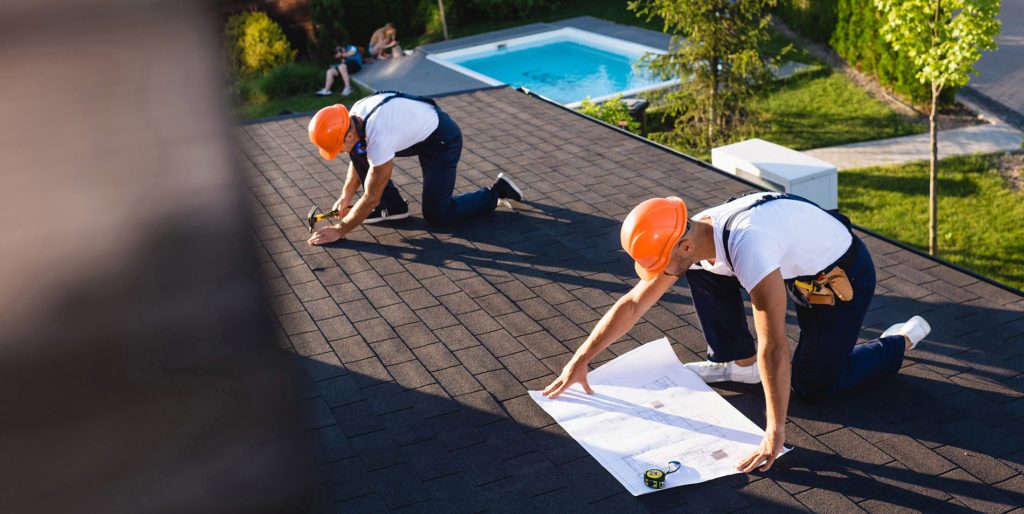Filing an insurance claim after storm damage can be a daunting task, especially if you’re not sure where to start. But don’t worry – we have got your back!
In this article, we’ll provide tips and tricks for filing an insurance claim so that you can get the help and compensation you need quickly and easily. We understand how stressful it can be when dealing with the aftermath of a storm, which is why we want to make the process as simple for you as possible.
So let’s dive in and explore what you need to do to file an effective insurance claim after storm damage.
Assessing The Extent Of The Damage
When it comes to filing an insurance claim after storm damage, the first step is assessing the extent of said damage. Before doing this, it’s important to take preventative measures so that any further damage can be avoided. This includes steps such as boarding up broken windows or covering holes in your roof with a tarp until a local contractor can get to you and fix them properly.
Once you have taken these precautions, start inspecting your property for any other damages that may have been caused by the storm. Look closely at the walls and floors inside your home or building for signs of water damage. Check roofs, gutters, and downspouts for loose shingles and blocked drainage systems which could cause major leaks if not addressed quickly. You should also look out for any fallen trees or debris on your property that needs clearing away before more extensive repairs can begin.
It’s essential to document all of this information with photos and videos in order to provide evidence when making your insurance claim later on. Make sure you keep detailed records throughout the entire process; from taking those initial preventative measures right through to engaging local contractors who will help you repair the damage done by the storm. Doing so will make it much easier for you when it comes time to file your insurance claim and receive compensation for what was lost during the event.

Gathering Supporting Documentation
Gathering Supporting Documentation is key to filing an insurance claim after storm damage. It’s essential for dealing with adjusters and negotiating settlements, so you want to make sure that as much evidence as possible is collected.
Your first step should be taking pictures of the damaged property from every angle – this will help document the severity of the damages in order to ensure a successful claim. You can also take videos if necessary to capture any movement or changes caused by the storms.
It’s important to keep detailed notes about all conversations with your insurance company, including dates, names, contact information etc., especially when it comes time to work out the details of your settlement. Additionally, save copies of any letters sent between you and your insurer throughout the claims process. This way, both parties have a clear understanding on what has been agreed upon and there won’t be any confusion further down the line.
When a storm damage claim adjuster in Santa Fe submits your claim, make sure all paperwork is organized by category such as policy documents, photos of damages, repair estimates etc., so that everything is easy for your adjuster to review and assess quickly.
Contacting Your Insurance Provider
Before diving into a conversation with them, make sure you understand their requirements and exclusions for filing storm damage claims. Knowing what is expected of you as a policyholder will help ensure that your claim isn’t denied or delayed due to incomplete information or incorrect documentation.
It’s also important to be aware of any limits on coverage in terms of the type and amount of damages covered. When submitting the paperwork associated with your claim, include an itemized list detailing each damaged area within your property and its estimated cost so that nothing gets overlooked. This will provide tangible evidence when negotiating settlement amounts with the insurer.
Before beginning negotiations, familiarize yourself with local building codes and regulations related to repairs after storm damage. Make sure you’re prepared to answer questions about required materials should they come up during conversations with the adjuster assigned to review your case – this could potentially influence the outcome of your claim!
Completing An Insurance Claim Form
Filing an insurance claim can be a daunting process, but it is important to remember that you are not alone in the journey. By reviewing paperwork and understanding the filing process, you can ensure that your claim will be handled quickly and efficiently.
Start by gathering all of your relevant documents, including any receipts for repairs or replacements related to the storm damage. This will help streamline the filing process so that you don’t miss out on any reimbursements from your insurer.
It is also essential to understand what type of coverage you have purchased with your policy; this could save time when negotiating with insurers over payment and other details during the claims process.
Once everything has been compiled, take some time to read through the forms provided by your insurer carefully before submitting them. Making sure every detail is accurate and up-to-date will improve the chances of a successful outcome.
Submitting A Detailed Estimate Of Repairs
A storm can be a devastating event, leaving countless homeowners with serious damage to their property. Reviewing estimates and negotiating costs is an important part of the process in making sure you get your home back to its former glory.
The first step in submitting a detailed estimate of repairs is gathering all relevant documents such as photos and videos of the damaged area taken before, during, and after the storm. This will help provide proof of damages sustained for insurance claims. Additionally, having any receipts or invoices from materials used to repair or replace items prior to filing a claim should also be included. Doing this gives the adjuster an accurate understanding of what repairs are necessary and how much they cost.
Once you’ve gathered all these documents, it’s time to review them carefully so that you can negotiate with your insurer on prices if needed.
Remember that while insurance companies always want to save money wherever possible, it is still important that all approved repairs are done correctly and up-to-code.
Following Up On Your Claim
After submitting a detailed estimate of repairs, you will now need to follow up on your claim. This can be an overwhelming process, as you are likely dealing with delays and managing expectations. However, there are several steps that you can take in order to make the process smoother for yourself.
First, contact your insurance company regularly regarding your claim status and any updates they may have about it. Be sure to keep all correspondence from them documented so that if something goes wrong or if something needs clarification later on down the road, you won’t be left without evidence or proof of what happened during this stage of the claims filing process.
Additionally, don’t forget to ask questions while speaking with representatives – understanding how things work is key to ensuring everything is handled properly throughout this entire ordeal.
Finally, remember that patience is a virtue when following up on your claim; sometimes things happen slower than we would like them to due to paperwork backlogs or other unforeseen circumstances. It’s important not to let frustration get the best of you and instead focus energy into researching solutions and alternatives should you encounter unexpected issues along the way.

Understanding Your Policy And Coverage Limits
It’s a frightening feeling when you realize your home is damaged by a storm and you need to file an insurance claim. You want to make sure that the policy covers what happened and that your coverage limits are enough to cover the damage. That’s why it’s important to review both your limits and exclusions in order to understand how much protection you have against storms.
When reviewing your coverage limit, consider if they’re high enough for the type of storms that frequently occur in your area. It may be worth taking out additional coverage if there’s a chance of more severe weather happening than what was originally covered by the plan. Additionally, look at whether or not any deductibles apply for certain types of damages caused by storms such as flooding or wind damage.
Reviewing exclusions can also help ensure that you get all the benefits from your insurance policy should something happen with regards to storm damage. For example, some policies don’t cover damage from landslides whereas others do – so it pays to know exactly what you’re covered for before filing a claim.
Understanding these details ahead of time will save valuable time later on should anything actually happen due to a storm event.
In other words, being aware of both limits and exclusions associated with storm-related claims can go a long way toward helping ensure that you receive adequate compensation should something happen down the line. Knowing this information beforehand will help put your mind at ease knowing that everything is taken care of should disaster strike again.
Conclusion
It’s important to understand your policy and coverage limits before filing a claim for storm damage.
It’s also essential to document all the damage done, contact your insurance provider, fill out any necessary forms accurately, and submit an estimate of repairs.
Filing an damage claim in Rio Rancho New Mexico can be intimidating at first but with these tips, you’ll have greater confidence in the process.
Remember that having patience is key when dealing with insurers – they may take some time to get back to you on your claim.
Keep up communication throughout the process so that no detail slips through the cracks!



